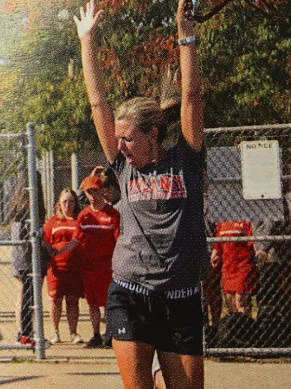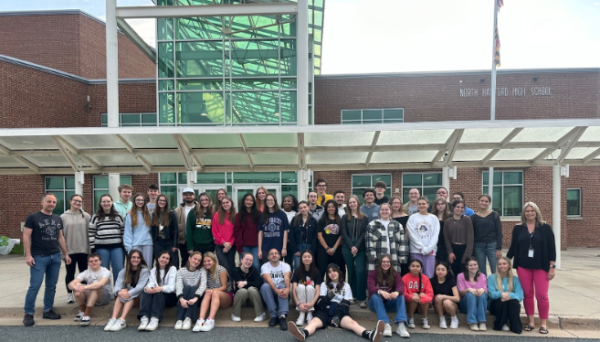Students ‘drive’ into unit on gravity; Physics class works on engineering process
February 10, 2022
Mrs. Christine Jestel’s advanced physics class has recently finished assembling their gravity cars. The project took the students about six weeks from start to finish to complete.
Jestel comments, The project was called a gravity drop car, which means the only force powering the car was gravity. Something has to be in free fall and cause the car to move forward.”
The educator added “The unit was based on forces[…].” The students “have done lots of labs and notes related to the forces. The idea now is to take it and apply it to the machine,” comments Jestel.
The students got the project early on in the quarter and product testing was scheduled for January 21. The cars were tested in the hall where tape lines were set at every one foot. “Students started at the start line and we saw how far the car traveled,” Jestel says.
The students were allowed to use any household materials as long as the materials did not consist of “[…] anything that would be another source of force, so we could not have a fan or anything that would use air resistance, propellant, any other ways,” said sophomore Kaitlyn Calland.
“I wanted to try a new project and I wanted to give them [the students] something that allows them to go through the engineering process,” Jestel states.
Jestel said often students had to face challenges when building the cars, and they had to overcome those challenges. “When they build it[the car], it never works the first time.They are trying to get it to go a full 20 feet, so they have to tinker with it to maximize how far the car will go.”
Junior Jenna Amrhein learned that “You [have] to figure out what would work and what was not working and why it was not going 20 feet.”
Calland comments, “I think it was a challenge to definitely problem solve when it was not working, trying to figure out what the problems were, how I could redo it and making sure it was strong enough, and making sure it was an effective car.”
Junior Marissa Struhar also faced a challenge of her car having too much weight on the front wheels, so the car would not move.
While students say they faced challenges while building the cars, they also overcame the challenges and learned something more about physics. Calland states, “I definitely learned more about the engineering process and time management because sometimes it was just making sure you [have] enough time.”
Amrhein also comments, “Nothing usually works in the first try; you will probably have to redo it and fix the problems, but you will eventually get it.”
Jestel states that there are two key things that the students learned from building their cars, “[…] one they learned whether they are actually interested in being an engineer, the idea of designing something, seeing if it works, making it better. The second piece is pulling together what we learned about pulleys, forces, a little bit of rotation, and displacement,” Jestel comments.










